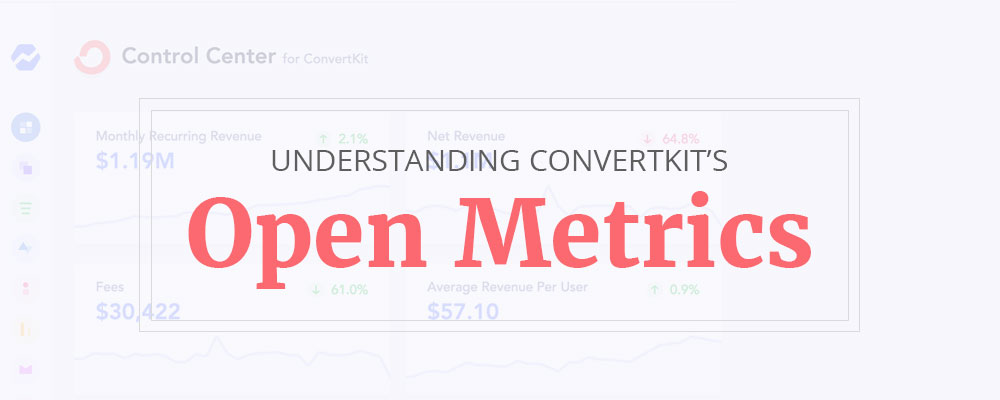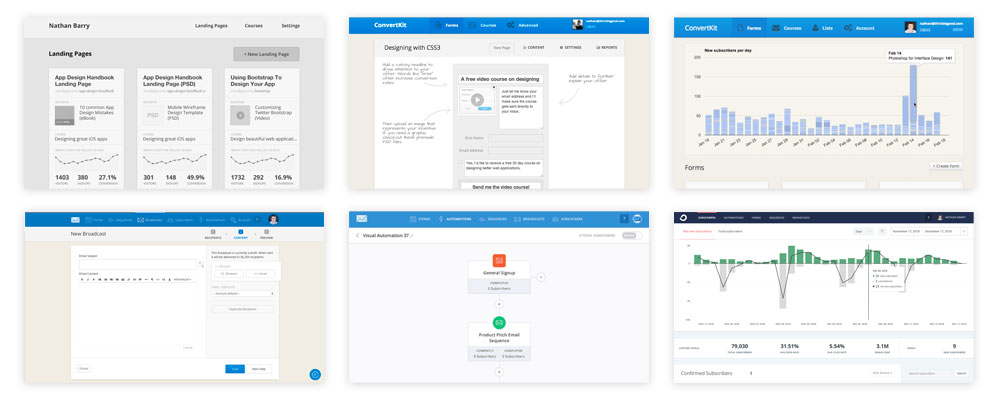When starting a new business project, how do you decide what to produce? The common thing you hear is that an idea is necessary to start. I know a lot of wannabe entrepreneurs who are constantly trying to come up with their next big idea. They think great ideas are not only hard to come by, but also the biggest factor in determining your success (note: if you think like this, read Derek Sivers’ post on ideas).
Sorry to burst your bubble, but an idea you come up with is a terrible place to start a new business. The reason is that businesses need to make money if they are to be sustainable. To make money a business needs customers. Customers don’t pay for ideas; they pay for their problems to be solved. So rather than looking for an idea for what to build, you should be looking for a painful problem that you can solve. People will pay to make pain go away. The more painful and frustrating the problem is, the more they will pay.
So rather than sitting around dreaming up ideas, we want to find a painful problem to solve. That solution will become the idea for our business.
This podcast that Pat Flynn recorded with Dane Maxwell is excellent!
Note: have you seen my latest book, Designing Web Applications?
Introducing Idea Extraction
Listening to Dane Maxwell explain Idea Extraction was the first time that this entire process really made sense to me. I knew enough about creating software and running businesses that I knew all the individual parts (and knew the value of what he was saying), but Dane brought all the pieces together into a system.
Idea Extraction is really pretty simple. Talk to potential customers to find their pain. Once you come across a painful problem, validate it with other companies in the same industry. Then find out how much these companies are willing to pay for this problem to be solved. This is the most accurate way to determine how painful the problem really is.
Finding a Market
Your first step is to pick a market. Sounds complicated, but since you aren’t committing to anything, you can start with any market. What I did was look through my Facebook, LinkedIn, and address book contacts and make a note of anyone who worked in an industry which met the following criteria:
- Is a business. Individuals aren’t nearly as willing to pay for painful problems to be solved.
- Currently pays for (and understands the value of) software for their business.
- The business makes over $100,000 a year.
- Is profit motivated (it’s much harder to sell to non-profits and charities).
- At least 5,000 businesses in their industry.
- It is possible to get the person with the painful problem on the phone (owner, office manager, etc).
My personal list consisted of two insurance agents, two commercial real estate agents, a landscaper, a dentist, three lawyers, an optometrist, a venture capitalist*, a home care business owner, and two small web design agencies. These are all people who I know personally (or have some connection to) that I could get on the phone. That made for a decent list of industries to start from.
If you don’t have a lot of contacts you can make a similar list by looking through the business index from your local chamber of commerce. I also really like the approach that Sam Ovens took when starting idea extraction: he looked through job ad websites like Monster.com to see which industries were hiring employees. Since he wanted to target an industry that was doing well and had money to spend, he used hiring (number of job postings) to determine their current success. That led to him choosing property management companies as an industry and ultimately creating SnapInspect.
* Note: there are only about 500 venture funds, so this shouldn’t have been on my list. As my VC friend told me, “even if every fund were a customer at $2,000/YR, annual revs would be just $1M.” If you think $1M in revenue isn’t bad, keep in mind that is assuming every single fund purchased your product. Not likely.
Getting them on the phone
In order to get people on the phone I sent them an email to make first contact. The email pitch I used is directly borrowed from Dane Maxwell. Here is the email I sent (fill in the blank with the industry: landscapers, lawyers, etc):
Quick software question
I’m doing some research into software used by ________. Just curious, is there any software you’ve been looking for over the last few years that you are having trouble finding?
The Conversation
- What is the most important activity in your business?
- Is there any pain associated with that activity?
If that didn’t seem to be going in a productive direction I would try this question:
- What do you spend most of your time doing?
That gets them talking (which is good) and helps you dive into specific parts of their business. If their answer is lame or they don’t have much to say you can have them take you through one of their days (like yesterday). Whenever you hear something that sounds complicated or frustrating ask them to tell you more.
In fact, throughout this process the two most valuable things to say are:
- What else?
- Tell me more.
I found that people would gloss over potentially painful problems to tell you about an idea they had. The ideas were never worth very much (though I was still very grateful for them talking to me). You will really need to dive deep in order to find the pain. Otherwise you will leave the conversation thinking nothing frustrates them.
The Problems
Here are a few of the problems I uncovered during these conversations. I was instantly thinking of solutions, but I think it is better to write down the problem so you can spend time to better understand it.
- A small web design shop has issues with quality control and delivering a consistent experience to their customers. Standards and processes are needed for image slices, code quality, and different roles on the project.
- An attorney wants an easy way to manage the many dates and documents related to court cases (there are plenty of applications available for this, but they are all too complicated for his business).
- The owner of a home care company needs an easy way to take notes on the go related to his clients and contractors so he can get shifts covered when he is back in the office.
- The same person wants a way to easily track mileage while he is on sales calls, then easily generate reports for a manager or for tax purposes.
- Someone else wanted an easy way to take voice notes about a client call on their iPhone and have them quickly stored with a contact on their phone, to be accessible later from their computer at the office.
- An attorney wanted an easy way to get quotes from many insurance companies to annually renew their legal malpractice insurance. Each company asks for a different set of information so it is time consuming to get quotes from multiple companies.
Plenty more ideas and problems came up in the conversations, but most weren’t worth paying to have them solved. At least for these each person said they would pay for a solution, though none of these ideas seem really great to me.
If you are serious about idea extraction, a list like this should just be the beginning. You shouldn’t expect to find a problem worth solving in the first 5-10 phone calls. Give it time.
An important question
When someone tells you about a painful problem, you really want to know how painful it is. Unfortunately just a verbal description like “really painful” isn’t going to work, because each person you talk to will have a different scale. So that’s why you ask, “Would you pay for it?” If the answer is no, then the problem doesn’t really cause them pain. If yes, find out how much.
How much someone will pay is a metric that can be used across conversations to determine the level of pain. If you don’t ask, you won’t know if they would really pay for it.
Another Direction
So, if I know results don’t come right away from idea extraction, why did I stop so soon? Well, I have an idea. It solves a problem I have, so I want someone to build this software. I thought of it early last week, so in addition to my regular idea extraction calls, I contacted people who knew about this industry and were potential customers, first to get feedback and second to see if they would buy it.
Everyone said it was a good idea and four people said they would buy it (I only talked to a few people). Two committed to pre-order. Not bad, right?
Dan Shipper pointed out on Twitter that having a verbal commitment is not the same as having a credit card to charge. He’s right. That’s why I’ll be adding true pre-orders soon.
But it’s really important that you don’t just run off and build your own idea. That’s how months get wasted building software that no one wants. By validating the idea with potential customers, I can know whether other people share my pain and then I can decide if it is worth solving. All with a handful of conversations over a weekend.
I’m not quite going to reveal the software yet. Give me another week or two to flush out the idea, then I’ll share it.
Week Summary
I worked on The Web App Challenge for 14.25 hours last week. That doesn’t include 2.5 hours spent learning Rails.
- Marketing: 1 hour
- Idea Extraction: 4.25 hours (Edit: I wrote this down at 2.25 hours, but missed something. 4.25 hours is what it should have been.)
- Planning: 1 hour
- Design: 8 hours
Those are just from my notes in Freshbooks, using whatever task I felt best described my time spent. The eight hours spent on design were mostly sketching and Photoshop wireframes for this new app idea. In addition to time spent learning Rails, the other thing I am not counting is time spent writing blog posts like this one. Or should I count that time?
More updates coming soon!
P.S. If you want to follow along by email just drop your email address in the form below. That’s where I’ll announce things first.



Nice post as usual, Nathan. I particularly like that although your conclusion did not come from the idea extraction calls, you still decided to include it in your post as part of the process. So, when do we get to hear what the idea is?
Nice post. It summarizes the fact that the “build it and they will come” mentality rarely, if ever works… Many have found this out the hard way.
My favorite thing to ask customers is “If you could change one thing about how your business operates, what would it be?” I think it distills the pain point they have quickly.
I like that one. I’ll have to use it in the future.
This is an awesome post and really stresses the importance of qualifying your idea before pulling the trigger. Nathan makes a great point that too many people try to spend months developing and launching an idea that no one will pay for (because it wasn’t qualified first).
The other thing I find useful that was noted here is the ability to understand what is going on during development. Even if the owner (Nathan in this case) doesn’t do the actual development of the application, it is still important to learn something about the programming language and how the development process works.
Good Luck Nathan…you seem to be off to a great start!
Nice post Nathan. I would say you should not include your blogging efforts documenting the process in the total hours. It’s definitely separate from ‘creating the product’.
Good luck and looking forward to more updates!
You barely did enough work to scratch the surface on idea extraction and validating an idea before going to market. You may as well have done nothing.
From my experience people always think bad ideas are good before you actually start taking their money, pre-sales done verbally over the phone mean almost nothing.
The content of the blog post isn’t bad but people should be aware it takes much more than 4.5 hours or 10 phone calls to even consider you did your due diligence before building here.
Enjoyed reading. I’m learning a lot. Thank you for sharing your experience. I would include the time you spend crafting the posts. As you do, you have to organize and distill the efforts you’ve made. In a way, that’s doubling over your tracks and possibly discovering something you overlooked or thinking of something in a new light. That’s my reasoning. It doesn’t matter too much though — in the end it’s just a number.
I’d definitely include the time writing these post into account for your weekly time sheet.
On a side note, what are you using to learn rails?
Nice post Nathan – enjoy tracking your process and progress.
A lot you describe has equivalents in startup discussions (2012 was the year for startups is seems) – for example Steve Blank’s Startup Owners Manual maps out the processes in detail. Steve uses a the Business Model Canvas as a single page scorecard.
I’ve been using the canvas with my clients (not startups) with an online tool I built – http://bmfiddle.com
It’s a great way to get them to really think about their business and quickly capture details that can reveal pain/gain areas. For a more product focused canvas try Ash Maurya’s Lean Canvas (select via settings).
You may find it useful/interesting to add your ideas/items to a canvas and update it as you progress. You can take snapshots of the canvas along to way to capture key changes (“pivots” in the lean startup world).
Such a cool post Nathan. Thanks for sharing. Also very impressed it only took you 2.5 hours to learn Rails. Hehe.
Thanks for sharing. What are you using to learn Rails?
I’m starting with Michael Hartl’s Rails tutorial book: http://ruby.railstutorial.org/chapters/
Just finishing up the last chapter. It’s really good!
Hi Nathan, I really enjoy your posts about the challenge!
When I ask people what they want or what they need I always find an existing app doing that. Do you make it anyway or you continue your research ?
This series of articles is really.. well, awesome! As I am currently exactly the wannabe entrepreneur “sitting around dreaming up ideas”, your article comes just in time! – Will now take a look at my address book ;-)